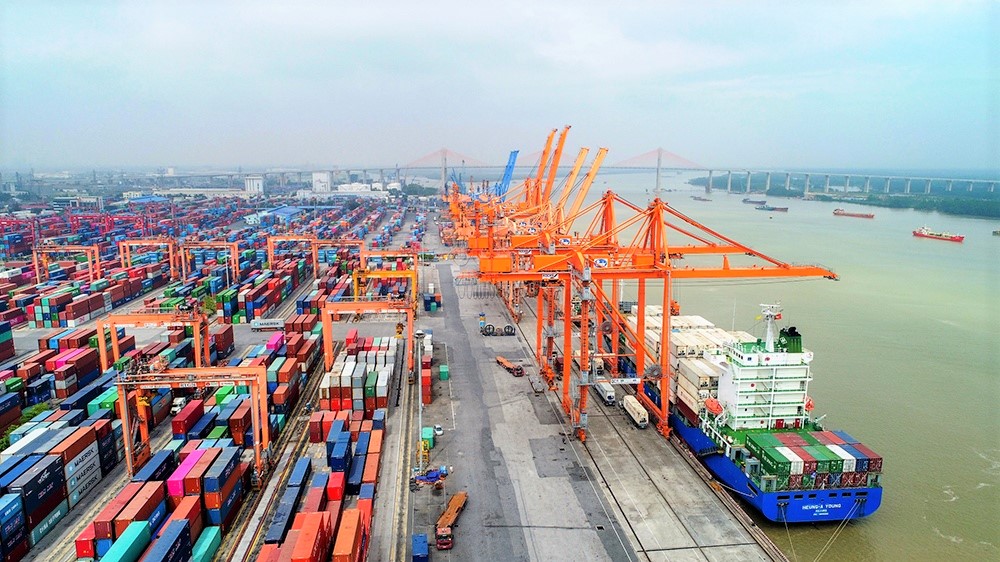Current criteria for determination of a seaport in Vietnam
What is seaport? What are the current criteria for determination of a seaport in Vietnam? - Thien Kim (Tien Giang)

Current criteria for determination of a seaport in Vietnam (Internet image)
Regarding this issue, LawNet would like to answer as follows:
1. What is seaport?
According to Clause 1, Article 73 of Vietnam Maritime Code 2015, seaport refers to an area enclosing port land and water areas of which infrastructure facilities are constructed and equipment necessary for incoming and outgoing ships is installed in order to load or unload goods, embark or disembark passengers as well as to render other services. A seaport may include one or two port terminals. A port terminal includes one or a lot of wharves.
Offshore oil port refers to a facility constructed and installed at the offshore oil production area for the ship to enter or leave for loading and unloading of cargoes and rendering of other services.
2. Criteria for determination of a seaport in Vietnam
Criteria for determination of a seaport according to Article 74 of the Vietnam Maritime Code 2015 are as follows:
- Have a water area thoroughly connecting to a sea.
- Have natural geographical conditions to meet requirements relating to construction of a wharf, port terminal, anchorage area, transhipment area and navigational channel for the ship to enter, leave and operate in a safe manner.
- Have advantages in marine transportation.
- Act as the center of the traffic network to facilitate inland freight transport, carriage and transhipment of exporting and importing goods by sea.
3. Classification of seaports in Vietnam
According to Clause 1, Article 75 of Vietnam Maritime Code 2015, seaports are classified into the followings:
- Special seaports mean large-scale seaports which are aimed at nationwide or inter-regional socio-economic development, and perform their functions as international transshipment or gateway ports;
- Grade-I seaports mean large-scale seaports which serve the purpose of nationwide or inter-regional socio-economic development;
- Grade-II seaports mean medium-scale seaports which serve the purpose of regional socio-economic development;
- Grade-III seaports mean small-scale seaports which serve the purpose of local socio-economic development.
4. Fundamental functions of a seaport in Vietnam
Fundamental functions of a seaport according to Article 76 of the Vietnam Maritime Code 2015are as follows:
- Provide vessel traffic services for ships which enter and leave a seaport.
- Provide transports, equipment and workforce necessary for ships to anchor, load or discharge goods and embark or disembark passengers.
- Provide freight transportation, loading, discharge, warehousing and storage services within the territory of a seaport.
- Play its role as the center to help different traffic networks outside of the seaport to get connected together.
- Be designed provide shelter, repair and maintenance or other indispensable services for ships in case of emergencies.
- Provide other services for ships, humans and cargoes.
5. Methods for assessment and classification of seaports in Vietnam
Methods for assessment and classification of seaports according to Article 4 of Decree 76/2021/ND-CP are as follows:
- Seaports are assessed and classified according to the scoring method. The 100-point scale is used. Each criterion has the assessment scale which is specified in Appendix attached to Decree 76/2021/ND-CP.
- Seaports are assessed and classified into 04 types
+ Special seaports: total score is greater than 90 points;
+ Class-I seaports: total score is from greater than 70 points to 90 points;
+ Class-II seaports: total score is from 50 points to 70 points;
+ Class-III seaports: total score is from 50 points to 70 points;
- Bases for assessment and classification of seaports
+ Data on the influence area of seaports which are based on the master plan for development of seaports that is approved by the competent state authority;
+ Data on the size of seaports that are based on the statistics of the average throughput of cargos in the last 3 years of the Vietnam Maritime Administration and the data on the tonnages of ships received at seaports according to the decisions on opening announcement of berths and wharves of the Vietnam Maritime Administration in the latest year.
- Classification of seaports for the purposes of seaport planning or seaport plan revision must be based on data on goods, expected tonnage of ship in each planning period and other criteria specified in Decree 76/2021/ND-CP.
- Key word:
- seaport in Vietnam
- Cases of land rent exemption and reduction under the latest regulations in Vietnam
- Economic infrastructure and social infrastructure system in Thu Duc City, Ho Chi Minh City
- Regulations on ordination with foreign elements in religious organizations in Vietnam
- Increase land compensation prices in Vietnam from January 1, 2026
- Determination of land compensation levels for damage during land requisition process in Vietnam
- Who is permitted to purchase social housing according to latest regulations in Vietnam?
-

- Notable new policies of Vietnam effective as of ...
- 16:26, 11/04/2025
-
.Medium.png)
- Notable documents of Vietnam in the previous week ...
- 16:21, 11/04/2025
-
.Medium.png)
- Notable documents of Vietnam in the previous week ...
- 16:11, 02/04/2025
-
.Medium.png)
- Notable new policies of Vietnam to be effective ...
- 16:04, 02/04/2025
-
.Medium.png)
- Notable new policies of Vietnam effective from ...
- 14:51, 21/03/2025

 Article table of contents
Article table of contents
